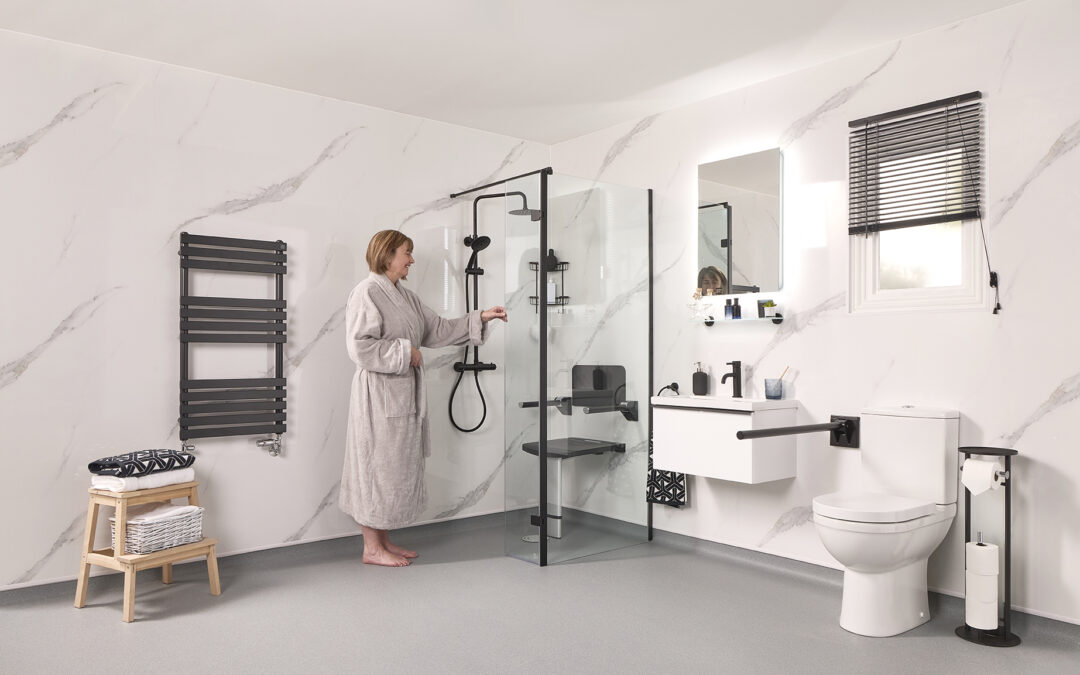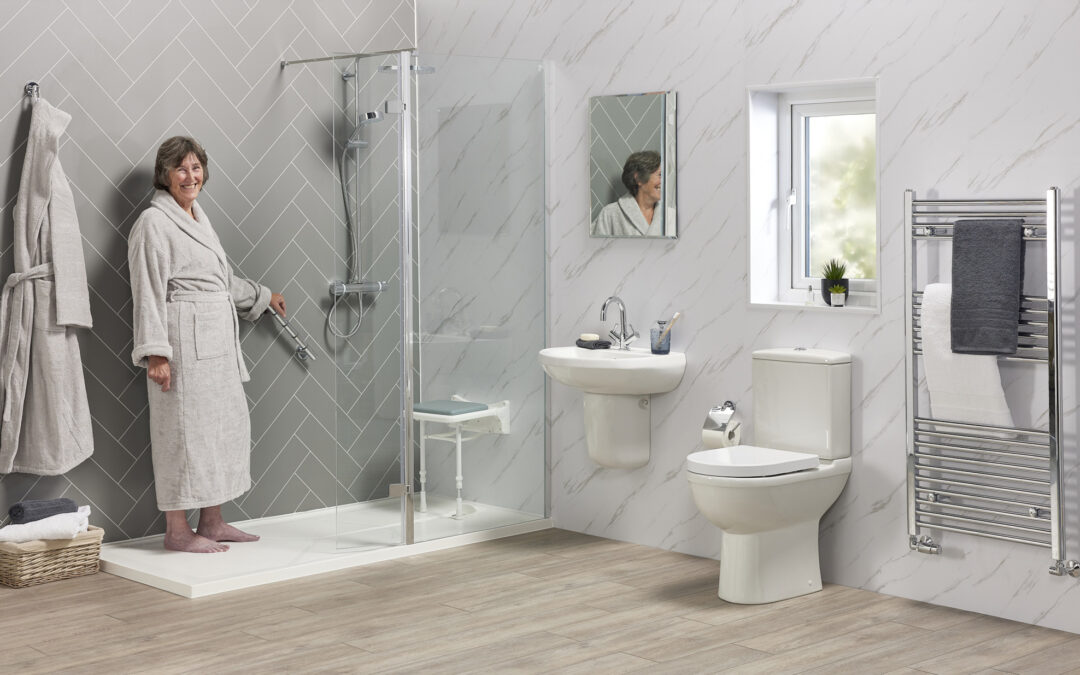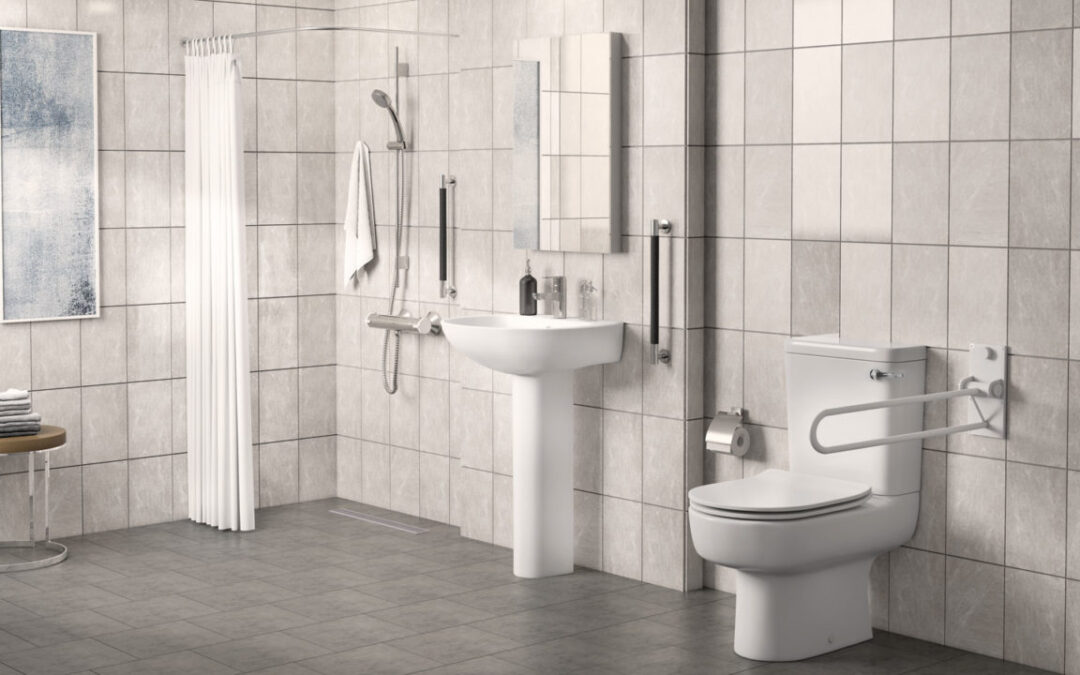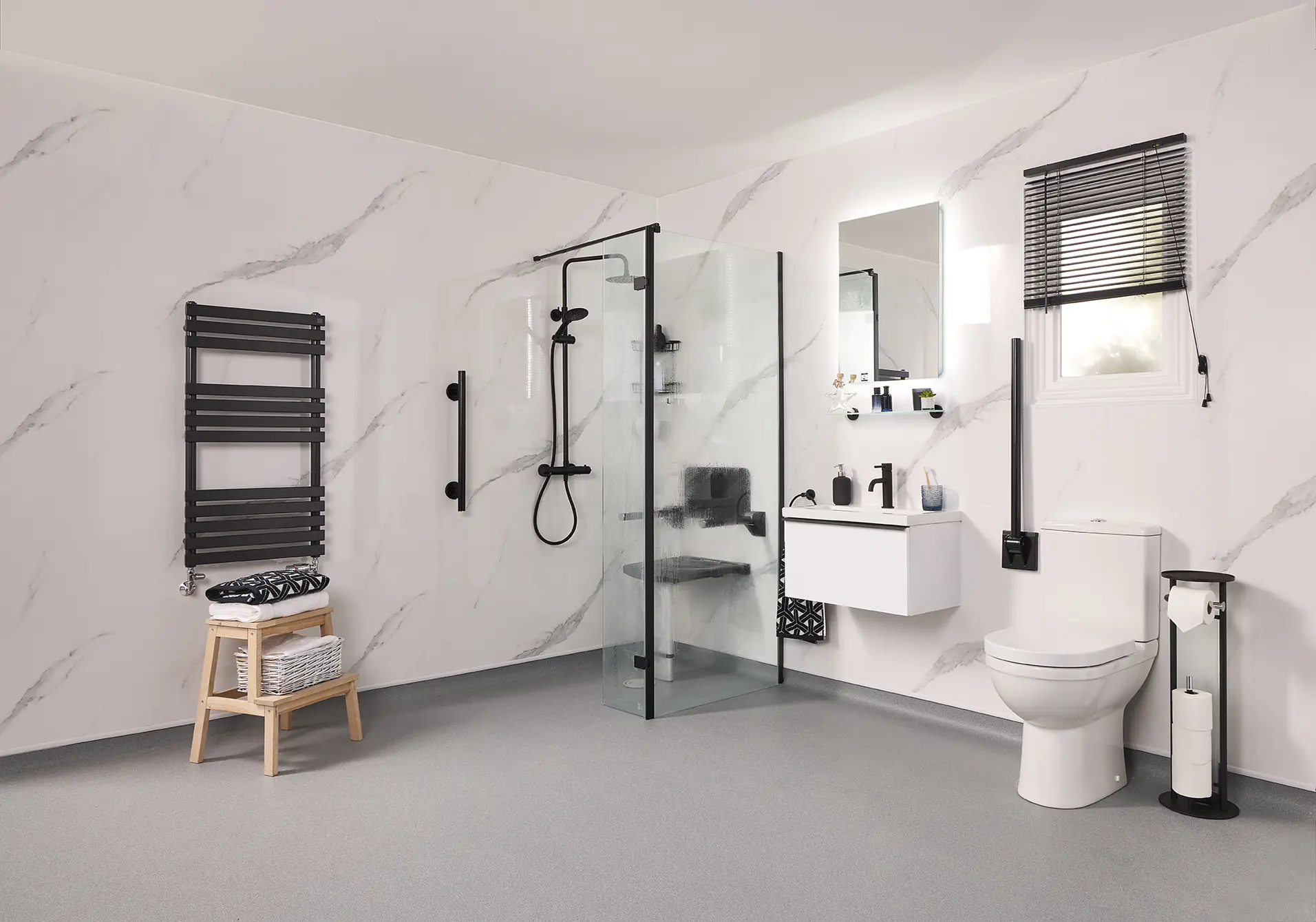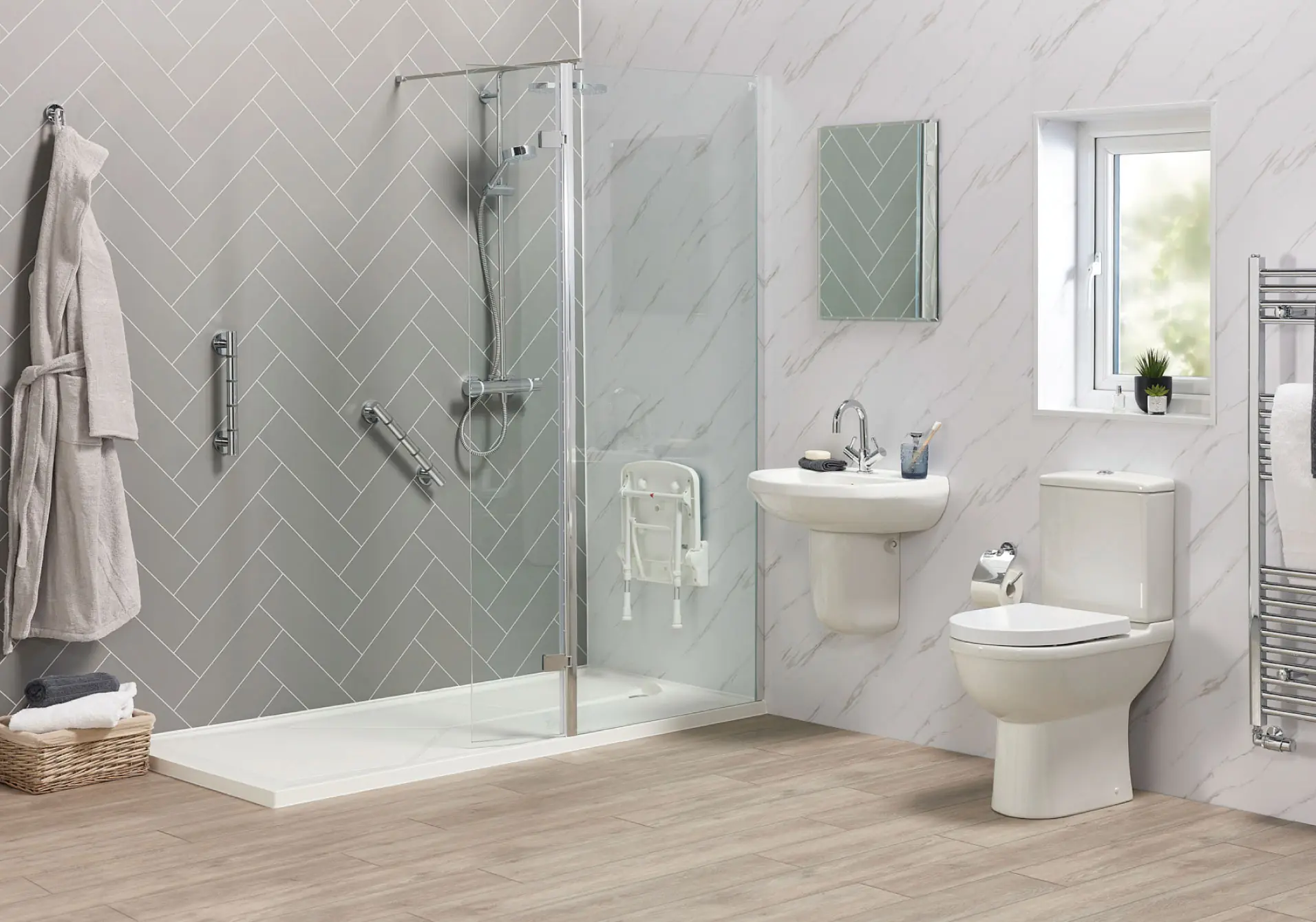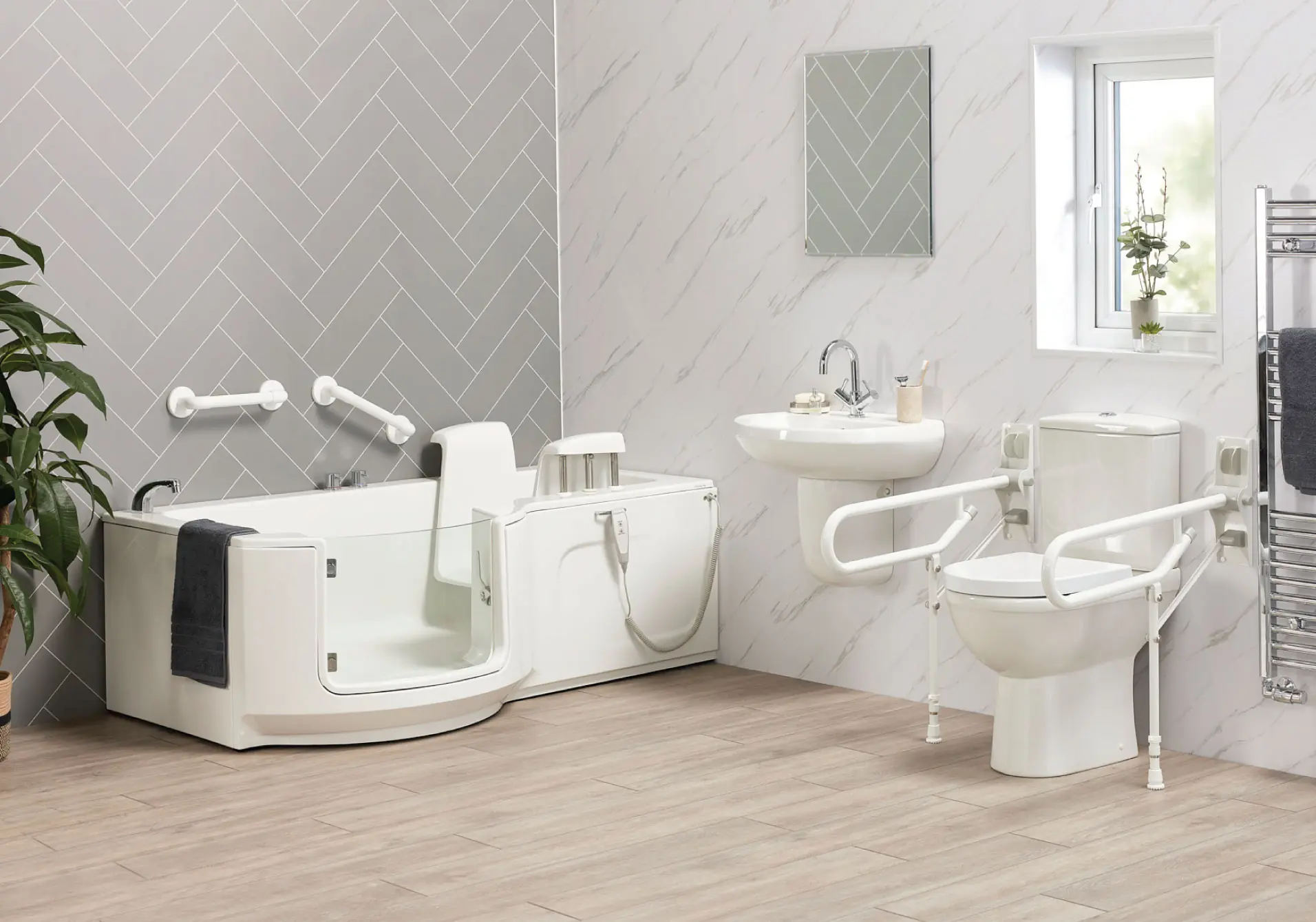Wet rooms are gaining popularity because they provide a safe and practical environment for the elderly and anyone with mobility issues. In addition, their sleek, minimalistic looks make them a must-have in modern homes and hotels.
A conventional bathroom typically has some form of water-resistant flooring – tiles and vinyl are the most popular choices – which will cope with small splashes from the bath or shower from damaging the timber or composite flooring underneath and the surrounding walls. The problem with this is that as tiling grout degrades over time or if water reaches the edge of vinyl flooring, the waterproofing is compromised.
With a wet room, a fully waterproof membrane installed underneath the flooring material protects the floor and walls from water damage.

What is a wet room?
A wet room is a completely waterproofed bathroom with a shower area at the same level as the rest of the floor. The water drains through a flush or waste drain within the shower area. Both the floor and all walls are sealed by a waterproof membrane, which means there is no risk of runway water causing damage.
What are the key features of a wet room?
As we have already mentioned, the main advantage of a wet room is the level of waterproofing it offers, as it is fully sealed to prevent damage from water spreading beyond the shower area.
A wet room is also easier to clean, as the entire floor and walls can be hosed down with a handheld shower head.
But wet room benefits aren’t limited to the practical advantages. A wet room can give your bathroom a modern, minimalistic look and is almost certain to add value to your home.
How can a wet room improve bathing for the elderly and disabled?
For anyone with mobility issues, a specialised wet room allows a larger showering area to be created that will allow for easy wheelchair access and manoeuvrability. The continuous flooring presents none of the potential trip hazards of shower tray thresholds or steps, and a carer can assist without obstruction from a conventional shower cubicle, surround or door.
If required, a wet room can also be fitted with a carer-height shower screen to contain water spray while giving a carer accessibility from outside the direct showering area.
Read more: The Advantages of Wet Rooms
How can a bathroom be adapted to a wet room?
To adapt an existing bathroom to a wet room, the floor is first profiled to create a gentle gradient leading to an integral floor drain outlet. A completely sealed and waterproof layer is then placed over the floor and this is finished off with anti-slip vinyl flooring.
How customised can a wet room be?
Another advantage of a wet room is that you aren’t restricted to the size or shape of available shower trays and enclosures. Every wet room is in effect a bespoke design, so you can optimise the use of space.
How EA Mobility can help
As a specialist wet room installer for customers with limited mobility, we have many years of experience and a wide range of solutions that can be tailored to your individual needs.
We also strive to create pleasant bathroom environments where you can begin and end each day in comfort, using products that are stylish as well as functional.
Every client’s needs are different, which is why we like to start with a visit from one of our home assessors. This is completely free and without any obligation to use EA Mobility for your wet room.
It’s also an opportunity for us to get to know you personally and to assess your needs while giving you professional, unbiased and personal advice on how your bathroom can be adapted.
If you choose to use EA Mobility for your wet room, our designers, fitters, electricians, plumbers and decorators will manage the entire project from concept to completion, working to the highest standards and with minimal disruption to your home and life.
If you would like to book a visit from one of our home assessors, please call us on 0800 468 1023 or fill out our online Contact Form and we will respond promptly.




